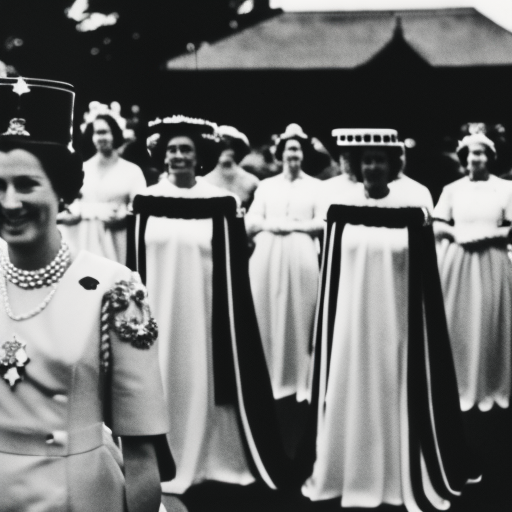Summary:
The coronation of Elizabeth II took place on June 2, 1953, marking the beginning of her reign as the Queen of the United Kingdom and other Commonwealth realms. The event was a grand spectacle, steeped in tradition and symbolism, and it served to reinforce the continuity of the monarchy in a post-war era. Elizabeth’s coronation was a significant moment in British history, as it represented a new chapter for the country and its monarchy.
The Preparation:
The preparations for the coronation began well in advance, with meticulous planning and attention to detail. Westminster Abbey, the traditional venue for coronations, underwent extensive renovations to accommodate the ceremony. The event was televised for the first time, allowing millions of people around the world to witness the historic occasion.
The Ceremony:
The coronation ceremony itself followed a carefully choreographed sequence of events. Elizabeth arrived at Westminster Abbey in the Gold State Coach, wearing a white satin gown and a crimson robe. Archbishop of Canterbury Geoffrey Fisher conducted the religious aspects of the ceremony, anointing Elizabeth with holy oil and crowning her with the St. Edward’s Crown. The Archbishop then presented her with various symbols of authority, including the orb, the scepter, and the royal ring.
The Oath and Homage:
After being crowned, Elizabeth took the Coronation Oath, in which she pledged to uphold the laws and govern the people according to their respective customs and traditions. This was followed by the homage, where representatives from various realms and territories paid their respects to the new Queen. They pledged their loyalty and allegiance to her, reinforcing the unity of the Commonwealth.
The Procession and Celebrations:
Following the ceremony, a grand procession took place through the streets of London. Elizabeth, now wearing the Imperial State Crown, waved to the crowds from the balcony of Buckingham Palace. The celebrations continued throughout the day, with street parties, parades, and fireworks displays held across the country. The coronation was seen as a moment of national unity and pride, bringing people together after the hardships of World War II.
Significance:
The coronation of Elizabeth II held great significance for the British monarchy and the nation as a whole. It symbolized the continuity of the institution and the beginning of a new era. Elizabeth’s reign has been one of the longest in British history, and her coronation marked the start of a reign characterized by stability, adaptability, and dedication to public service.
Legacy:
Elizabeth II’s reign has seen significant changes in British society and the world at large. She has navigated through periods of social and political transformation, remaining a constant figurehead and a symbol of national unity. Her coronation set the stage for a reign that has witnessed the decline of the British Empire, the rise of the Commonwealth, and the challenges of a rapidly changing world. Elizabeth’s commitment to duty and service has endeared her to the British people and earned her respect worldwide.
Conclusion:
The coronation of Elizabeth II in 1953 was a momentous event that marked the beginning of her reign as Queen of the United Kingdom and other Commonwealth realms. The ceremony was a grand spectacle, steeped in tradition and symbolism, and it served to reinforce the continuity of the monarchy. Elizabeth’s reign has been characterized by stability and dedication to public service, making her one of the most respected and beloved monarchs in British history.












